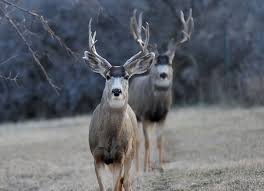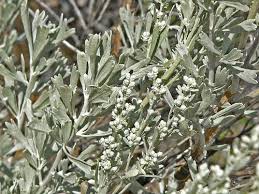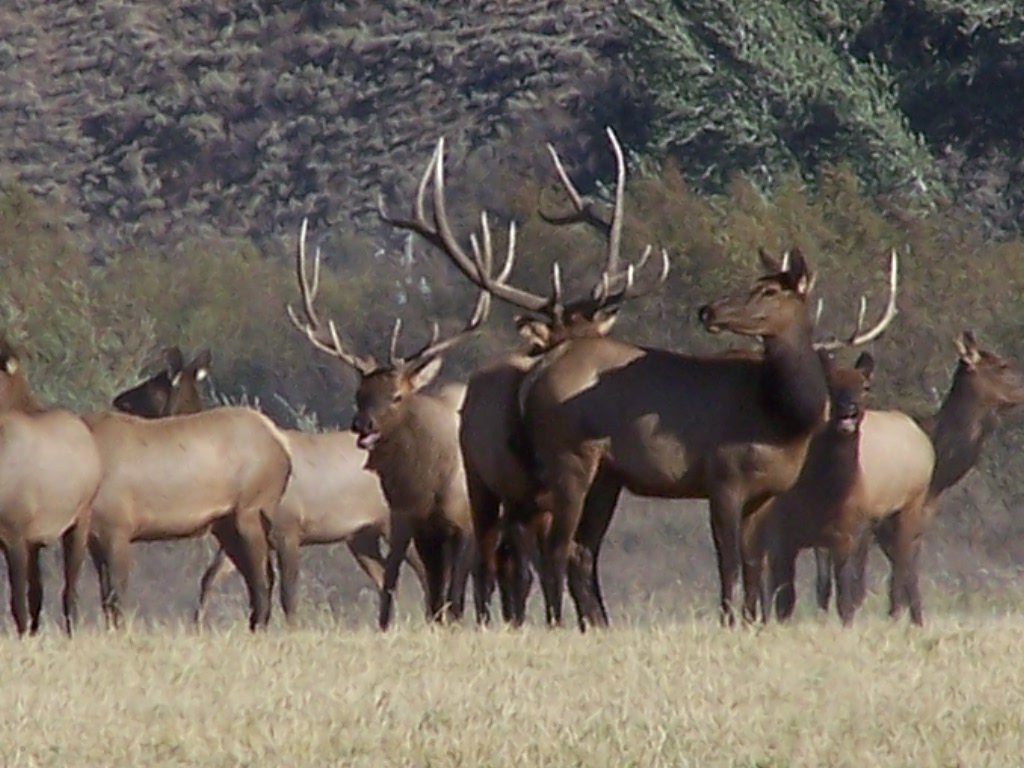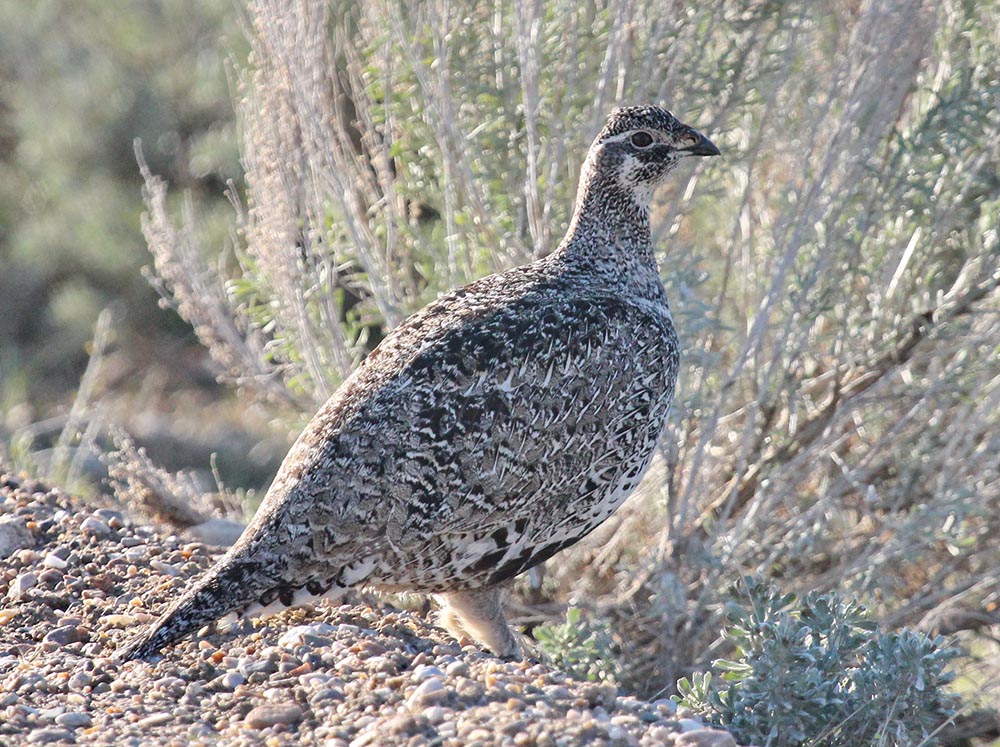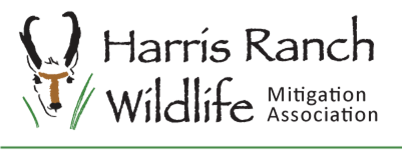
The 2016 summer wildfire that burned Table Rock and the Boise River Wildlife Management Area (BRWMA) was a dynamic force that change the face of the foothills. The foothills are home to residential deer and elk that migrate to the lower elevations of the BRWMA for winter. The BRWMA provides winter range for migration herds as well as habitat for a variety of wildlife year round. While the fire resulted in the loss of habitat, there is opportunity to re-establish foundation plantings and ward off proliferation of cheat grass. To restore a healthful foothills habitat requires volunteer work for many years to come. Please consider joining ecologist, Mike Pellant and other volunteers gathering sagebrush seeds this winter . You can be part of a legacy working to restore foothills habitat. Day trips for seed harvest are determined by weather and are slated for December 2019. Please register to volunteer: info@hrwma.org
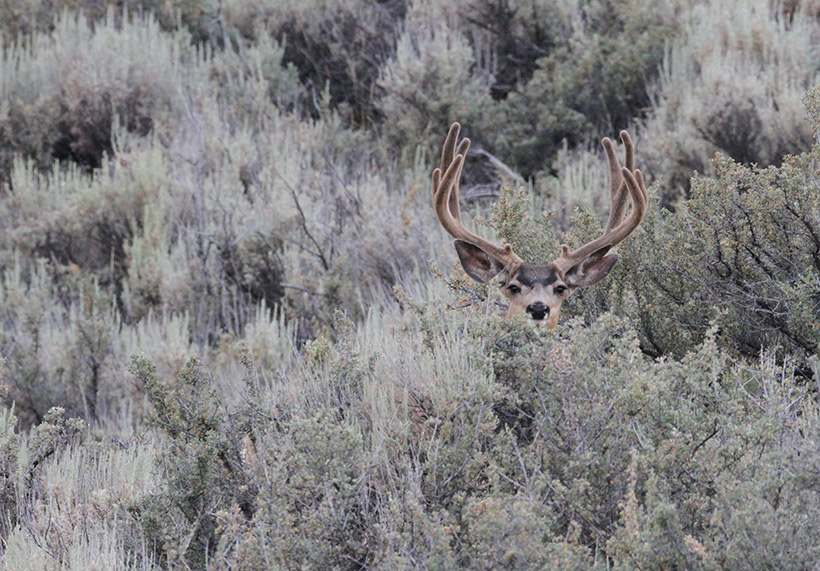 SAGEBRUSH (Artemisia tridentata) one of two main foundation plantings for habitat in the foothills
SAGEBRUSH (Artemisia tridentata) one of two main foundation plantings for habitat in the foothills
Sagebrush is a native shrub and a primary food source that serves as a foundation for wildlife habitat. Although sagebrush provides winter nutrition for deer and elk, the desert sage grouse relies almost exclusively on the shrub for food year round. These desert shrubs commonly reach maturity between 2 and 4 feet tall, but heights can be found taller in areas with high level of precipitation. Aromatic blooms comes in late summer or early fall, and the foothills are dappled with the conspicuous golden yellow flower. Sagebrush is defined by a sharp odor, especially after rain. Or get a whiff up close when the leaves are crushed and rubbed between your fingers. The deep taproot makes the sagebrush capable of drought tolerance, and the gnarl twisted trunks indicate endurance. As tough as the sagebrush look the shrub requires help re-establishing after fire. Re- growth is often problematic in the rising heat of the desert without adequate rainfall. It is estimated that 50% of the sagebrush steppe has diminished over the last fifty years and volunteer effort to re-establish plantings is an essential step to minimize the impact of the table rock fire on local wildlife habitat.

BITTERBRUSH (Purshia tridentata) another foundation planting for habitat in the Foothills.
Bitterbrush like sage brush is another staple food source for wildlife and the other foundation shrub of the foothills. Another native to the steppe, this shrub was once quite common across the Boise foothills. It is easily recognized by its broad reaching branches. Mature bitterbrush can have heights of 6 to 15 feet tall with a width of 4 to 6 feet. It produces fragrant, small, bright yellow flowers in the spring. Top sides of the three lobed leaves are bright to olive green and the undersides are whitish colored due to soft white hairs. Bitterbrush packs a lot of nutrition with a high protein content during the winter months. This makes it the “go to” plant for mule deer when snow covers other native food sources. Deer more delicate in statue than elk are unable to successfully dig into the snow and find food source as readily, and rely heavily on bitterbrush for winter forage.
 ~ EXTRA SPECIAL CONSIDERATIONS for WILDLIFE From HARRIS RANCH HOMEOWNERS~
~ EXTRA SPECIAL CONSIDERATIONS for WILDLIFE From HARRIS RANCH HOMEOWNERS~

Harris Ranch continues growing and becoming a thriving residential community. It is thriving with humans, and surrounded with wildlife. Those lands setting around Harris Ranch are an important home to a wide variety of flora and fauna. Our mission is to preserve this habitat. In the past, wildlife once used Harris Ranch property as a migration corridor. These animals still call the surrounding lands home. The land is also home to a rich variety of flora. Many plants are unique to Idaho and the preservation of habitat is vital to the continued survival of wildlife.
In an effort to ensure the survival of flora and fauna, the HRWMA encourages people to respect this important habitat. When hiking in the Foothills or along the Boise River, stay on designated trails to avoid interaction with wildlife and to protect plants. Please keep this in mind as you enjoy the Boise foothills.
TRAIL INFO & TIPS: The popular Homestead Trail - part of the Boise River Wildlife Management Area (BRWMA) - is once again open for careful use by homeowners. The trail was closed for safety reasons after the 2016 Table Rock wildfire burned more than 2,500 acres and another 1,000 acres of wildlife habitat on the BRWMA. Be aware that due to damaged habitat, winter closure may very well occur on the BRWMA for wildlife protection. To afford the greatest protection for wildlife in any season, always have dogs leashed. Dogs chasing wildlife is a known cause of wildlife mortality particularly in the winter season but chasing is always a threat to the well being of wildlife at anytime of the year. Please be mindful and honor the sacred beauty of wildlife in our community.
